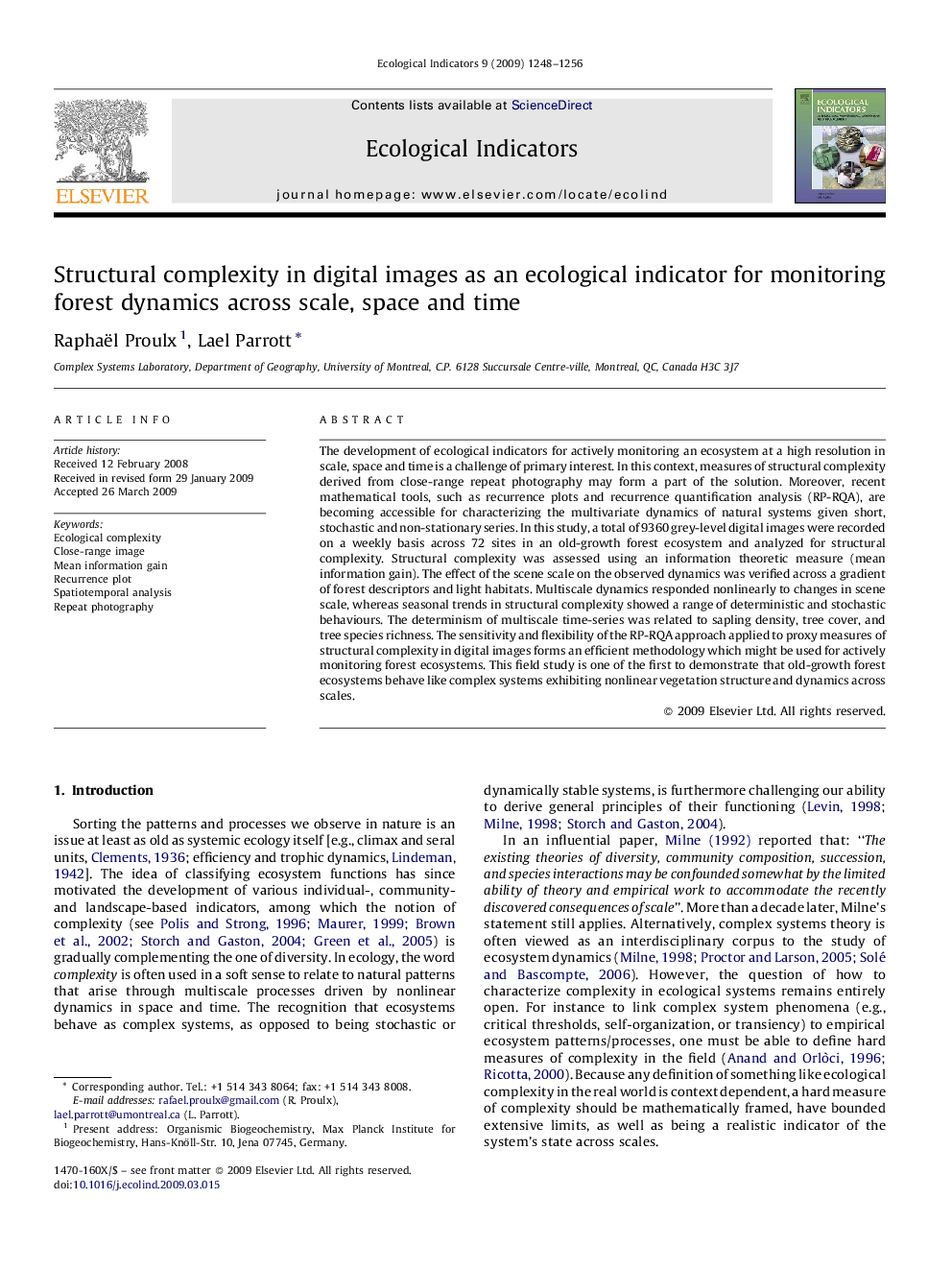| Article ID | Journal | Published Year | Pages | File Type |
|---|---|---|---|---|
| 4374353 | Ecological Indicators | 2009 | 9 Pages |
Abstract
The development of ecological indicators for actively monitoring an ecosystem at a high resolution in scale, space and time is a challenge of primary interest. In this context, measures of structural complexity derived from close-range repeat photography may form a part of the solution. Moreover, recent mathematical tools, such as recurrence plots and recurrence quantification analysis (RP-RQA), are becoming accessible for characterizing the multivariate dynamics of natural systems given short, stochastic and non-stationary series. In this study, a total of 9360 grey-level digital images were recorded on a weekly basis across 72 sites in an old-growth forest ecosystem and analyzed for structural complexity. Structural complexity was assessed using an information theoretic measure (mean information gain). The effect of the scene scale on the observed dynamics was verified across a gradient of forest descriptors and light habitats. Multiscale dynamics responded nonlinearly to changes in scene scale, whereas seasonal trends in structural complexity showed a range of deterministic and stochastic behaviours. The determinism of multiscale time-series was related to sapling density, tree cover, and tree species richness. The sensitivity and flexibility of the RP-RQA approach applied to proxy measures of structural complexity in digital images forms an efficient methodology which might be used for actively monitoring forest ecosystems. This field study is one of the first to demonstrate that old-growth forest ecosystems behave like complex systems exhibiting nonlinear vegetation structure and dynamics across scales.
Related Topics
Life Sciences
Agricultural and Biological Sciences
Ecology, Evolution, Behavior and Systematics
Authors
Raphaël Proulx, Lael Parrott,
